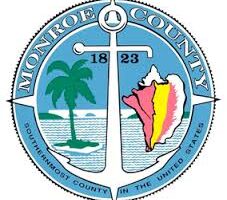BUSINESS LAW 101 / HEARSAY
By Albert L. Kelley, Esq.
In last week’s column I briefly mentioned the hearsay rule. This is probably the most common trial objection and yet the least understood. Law students study hearsay for weeks and still often don’t grasp all the nuances of it. I was privileged to study under Charles Ehrhardt, who wrote the definitive book on Florida evidence. He dedicates 198 pages to the hearsay rule.
Essentially, hearsay is any statement made outside of the court that is used to prove the truth of the facts within the statement. What does that mean? Well let’s break it down. “Any statement” includes any assertion made by a person either verbally, in writing, or through their actions. Hearsay does not necessarily require spoken words; it also includes activities such as sign language or any gesture that is used to convey information, such as nodding your head or shrugging your shoulders. Also, the statement must be made by a person. Computer-generated information is not deemed hearsay. Finally, the statement must be made intending to convey information; either a thought, idea or fact. Therefore, involuntary or spontaneous utterances, such as a scream of pain are not hearsay. Because hearsay requires a statement, merely testifying as to what an observer sees is not hearsay. A witness may testify that he saw Bob buy a gun; he may not testify that Bob said he bought a gun.
“Made outside of the court” means that the statement occurs outside of a court proceeding. Statements made by a witness in court are not themselves hearsay because the witness may be cross-examined about their testimony. However, under most circumstances, they may not testify as to statements that occurred outside of the Court.
“Used to prove the truth of the facts within the statement” is probably the most difficult part to understand. This means that the statement is being used to convey the information within the statement. This is probably better explained with examples. If Bob testifies that “Frank said the sky was blue”, and the issue is what color is the sky, it is hearsay. However, if the issue was whether Frank could see, the statement would not be hearsay. Or if Jane testifies that she heard Dave say “Julie shot me”, it would be hearsay if you are trying to prove who shot Dave; but not if you are trying to prove that Dave was conscious after being shot. A statement is only hearsay if the reason the statement is being introduced is simply to prove the details that are in the statement; it is not hearsay if being introduced for any other purpose.
Now let’s cover the examples I gave last week: police reports and repair estimates. Police reports are almost always hearsay. It is rare that a police officer actually observes an accident or crime being committed. Police reports are generally compiled based upon statements made by witnesses, victims, or third parties. They do not consist of the officer’s personal knowledge. If the report is being introduced to support the information in the report it is hearsay. Similarly, if a vehicle is damaged, and a witness tries to introduce a repair estimate, that would be hearsay as the estimate is a being used to prove the amount of damage to the car.
Now that you know what hearsay is, next week we will discuss why we have it and how to get around it.
Al Kelley is a Florida business law attorney located in Key West and previously taught business law, personnel law and labor law at St. Leo University. He is also the author of “Basics of Business Law” “Basics of Florida’s Small Claims Court” and “Basics of Florida’s Landlord-Tenant Law” (Absolutely Amazing e-Books). This article is being offered as a public service and is not intended to provide specific legal advice. If you have any questions about legal issues, you should confer with a licensed Florida attorney.
[livemarket market_name="KONK Life LiveMarket" limit=3 category=“” show_signup=0 show_more=0]





No Comment